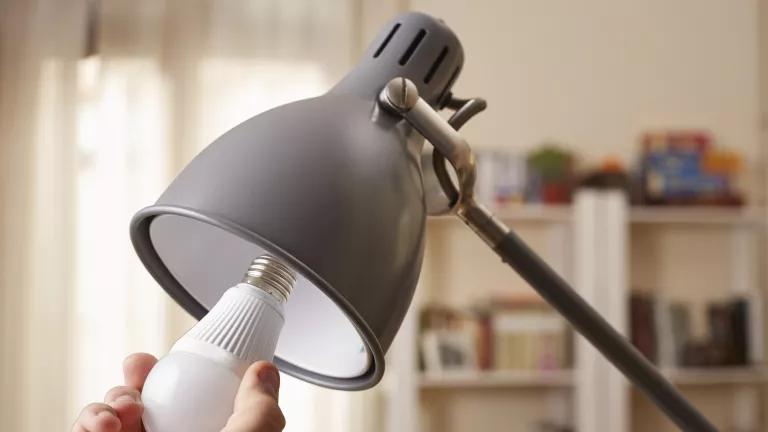Efficiency Standards: 2022 in Review
While it was a great year for the energy efficiency standards program, plenty more remains to be done.

Part of NRDC’s Year-End Series Reviewing 2022 Climate & Clean Energy Developments
2022 certainly was a big year for environmental policy in the United States. While things like the Inflation Reduction Act (understandably!) captured most of the headlines, there were plenty of positive developments in the energy efficiency standards space as well.
Lightbulbs
It was a long time coming, but this year the Department of Energy (DOE) issued a pair of regulations that will greatly increase the energy efficiency of the nation’s light bulbs. By requiring that common, everyday light bulbs meet a minimum efficiency level of 45 lumens per watt, the regulations essentially complete (with very few exceptions) the nation’s transition to efficient, long-lasting LEDs.
Furnaces
In June, DOE proposed an update to residential furnace energy efficiency standards. This is the first significant update to these standards in decades. While efficient electrification remains the best way to decarbonize buildings, not every customer is ready to make the transition. In the meantime, it is important to make sure that gas furnaces are as efficient as possible. That’s just what these standards would do. According to DOE, they will save consumers $1.9 billion annually in lower utility bills.
Delayed standards
In September, DOE settled a lawsuit, brought by NRDC and our allies, that accused the department of illegally failing to review (and potentially update) the nation’s energy efficiency regulations. Energy efficiency standards are a great way to save consumers money while simultaneously reducing carbon emissions, but without periodically reviewing and updating standards on a regular basis, those benefits are left on the table. The result of the settlement is a consent decree that will get DOE back on track.
Water Heaters
In November, NRDC and other key stakeholders jointly submitted a recommendation to DOE for updated residential water heater efficiency standards. One particularly noteworthy aspect is that the recommendation, if adopted, would transition much of the electric water heater market to heat pump technology. Because heat pumps are so much more efficient than electric resistance water heaters, the standards would save a colossal amount of energy – a whopping 27 quads over 30 years. The next step in the process is for DOE to issue a proposed rule, which DOE has indicated should happen in March of 2023.

Conclusion
While 2022 was a great year for the energy efficiency standards program, plenty more remains to be done. Capitalizing on the enormous financial and environmental benefits of energy efficiency will require substantial effort over the next few years. Rest assured, NRDC won’t stop fighting to see those benefits realized.




